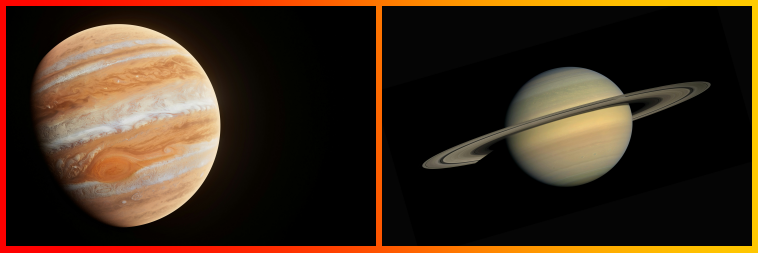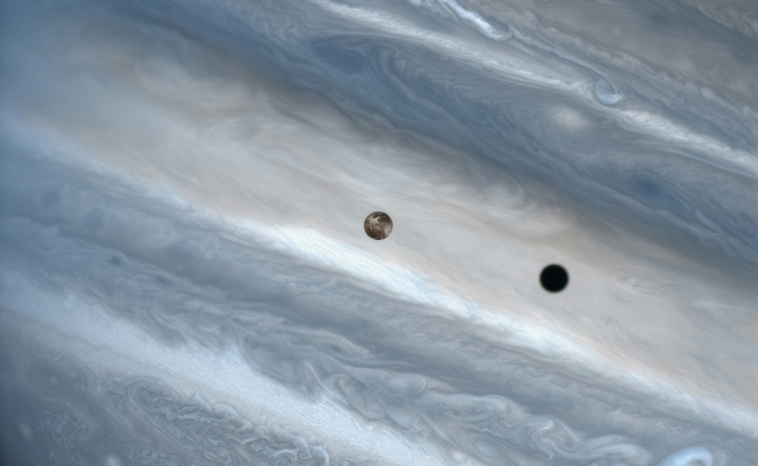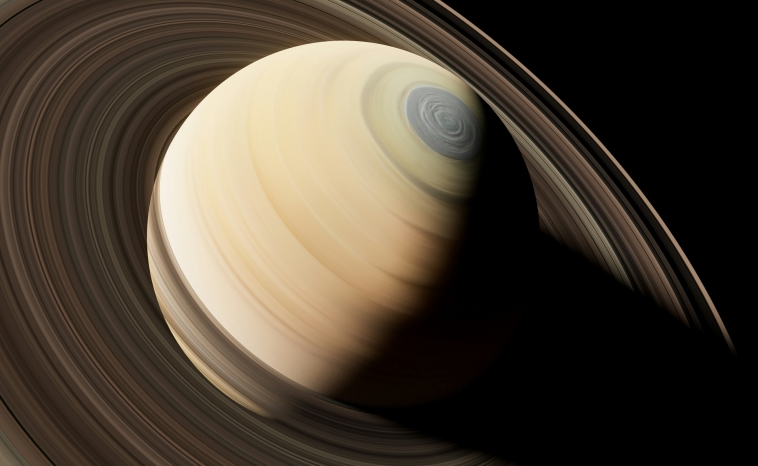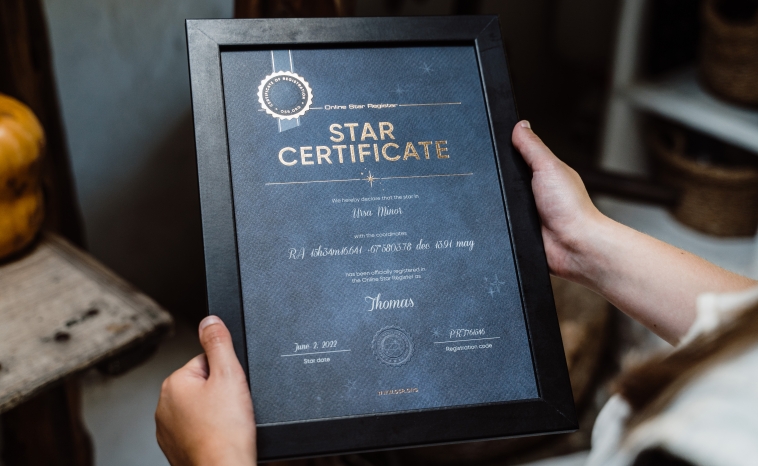Jupiter vs Saturn: The Giants of Our Solar System

Journey through the wonders of Jupiter and Saturn! Compare their sizes, compositions, and captivating beauty in this ultimate guide to these majestic planets.
Stargazers and space aficionados alike have long been amazed by our solar system’s two biggest gas giants – Jupiter and Saturn. After all, with immense size, numerous moons, and incredible ring systems, what’s not to love? But how do these two behemoths compare? In this article, we’ll pit Jupiter vs. Saturn and uncover what makes each planet tick!
Jupiter vs Saturn: Physical Characteristics
Size and Composition

With a diameter of about 142,984 km, Jupiter certainly reigns supreme as the largest planet in our solar system. It’s primarily made of hydrogen and helium, much like a star, and has a dense core surrounded by a mysterious liquid metallic hydrogen layer. Saturn, on the other hand, might be slightly smaller, with a diameter of 120,536 km. But compare that to Earth’s diameter of 12,742 km and it’s easy to see that we’re still talking about an absolute mammoth of a planet!
Aside from size, Saturn and Jupiter also share a similar composition, but thanks to its ammonia ice clouds, Saturn has a distinct yellowish hue.
Atmosphere and Weather
Jupiter’s atmosphere is a cacophony of colours and storms. The Great Red Spot, an anticyclonic storm larger than Earth, has been raging for at least 400 years. What’s more, its bands of clouds create a visually stunning spectacle as they move around the planet at different speeds and directions.
At first glance, Saturn’s atmosphere is a little less turbulent – but it’s just as fascinating. In fact, the hexagonal storm at its north pole and periodic superstorms demonstrate that this giant isn’t as serene as it appears!
Magnetic Fields
Jupiter boasts the strongest magnetic field of all the planets in our solar system. This powerful magnetic field is generated by the planet’s rapidly rotating metallic hydrogen core. The field traps swathes of particles, creating intense radiation belts. In comparison, Saturn’s magnetic field is a bit weaker. Interestingly though, the planet’s field aligns with its rotation axis, something that’s puzzled scientists and continues to be a subject of intense study!
Jupiter vs Saturn: Moons and Rings
Jupiter’s Moons

It seems like the number of moons that jupiter and Saturn have goes up each year! As of right now, scientists have discovered 95 moons orbiting Jupiter. The Galilean moons – Io, Europa, Ganymede, and Callisto – are by far the largest and most intriguing.
Io is the most volcanically active body in the solar system, while Europa has a potential subsurface ocean that might just be habitable for certain lifeforms. Ganymede is Jupiter’s largest moon, but even more impressive, it’s the only moon in the solar system that we know to have its own magnetic field. Finally, Callisto might not have a magnetic field like Ganymede, but it could well have a Europa-style subsurface ocean capable of supporting life.
Saturn’s Moons
CREDIT: NASA/JPL-Caltech/Space Science Institute
Saturn’s 146 (yep, 146!) moons include Titan, the second-largest moon in the solar system. This fascinating moon has a thick, hazy atmosphere with lakes of liquid methane and ethane. It’s actually the only moon in our solar system with a thick atmosphere like here on Earth. In fact, if you wanted to take a stroll on Titan, you wouldn’t need a pressurised suit – just an oxygen mask would suffice. That said, Titan is one of the coldest places in our solar system – with temperatures dropping as low as -180 Celsius, you might need to wrap up a little!
Enceladus is another of Saturn’s more fascinating moons. This frozen satellite spews water-ice plumes from its south pole far out into space, suggesting a subsurface ocean that might just support life.
Ring Systems

When it comes to rings, both planets have their own system – though one is certainly more impressive! In fact, Jupiter’s faint ring system often goes unnoticed, while Saturn’s rings are absolute showstoppers.
Composed mainly of ice particles, with some rock and dust, Saturn’s rings span over 280,000 km, but they’re also astonishingly thin. The intricate structure, with its gaps and divisions, features a number of individual bands, each with their own characteristics and origins, some of which continue to intrigue scientists.
Missions and Discoveries
Pioneer, Voyager, and Galileo are among the notable missions that have expanded our understanding of Jupiter and Saturn. Voyager 1 and 2 provided the first detailed images of the planets and their moons, while Galileo’s extended mission around Jupiter gave us invaluable data on its atmosphere and moons.
Currently, NASA’s Juno mission is orbiting Jupiter, studying its atmosphere, magnetic fields, and auroras. Similarly, the Cassini mission, which ended in 2017, provided us with a wealth of information about Saturn, its rings, and its moons.
Looking to the future, the upcoming Europa Clipper mission aims to investigate Jupiter’s moon Europa and its potential for harbouring life. Similarly, the Dragonfly mission to Titan will explore its surface and atmosphere, searching for organic compounds and signs of prebiotic chemistry that could indicate the presence of some form of life. Other future missions to Jupiter and Saturn will likely focus on their moons, given the potential for finding life, or at least the conditions necessary for it. Europa, Ganymede, and Enceladus are prime targets due to their subsurface oceans, but any such missions will need to use advanced technology to penetrate thick ice layers and analyse the underlying water.
Final Thoughts About Jupiter vs Saturn

With their incredible characteristics, diverse range of moons, and stunning ring systems, Jupiter and Saturn continue to inspire astronomers and space enthusiasts alike. And with a number of future missions set to unlock even more of their secrets, our obsessions with these two gas giants is unlikely to diminish any time soon!
There’s beauty to be found far beyond the orbits of Jupiter and Saturn, so why not bring the wonder of the universe a little closer to home with our luxurious Super Star Gift? With a personalised star certificate, our Super Star Poster, and equipment like our Fly Me to the Stars VR set and a branded telescope, this amazing gift is perfect for anyone who has their head in the stars!

